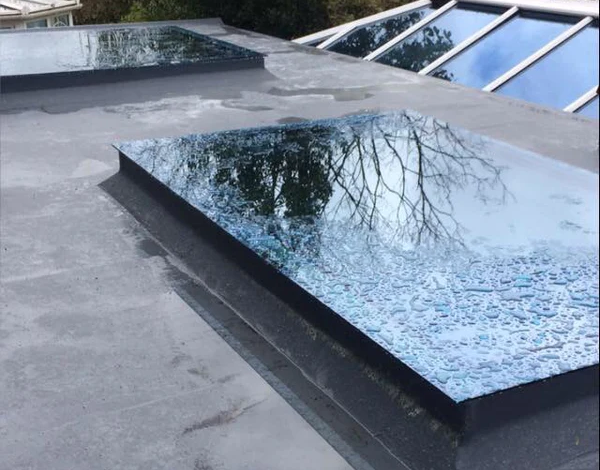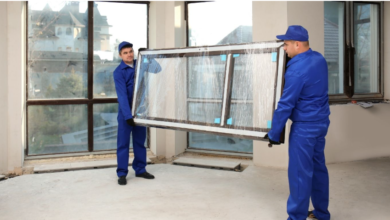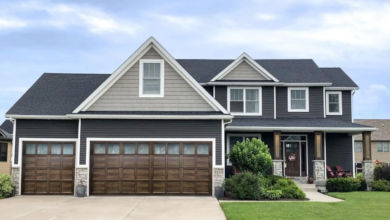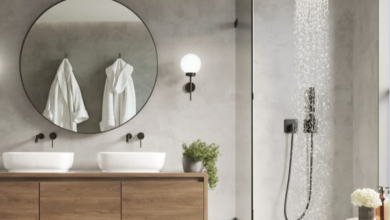Flat Rooflights: A Contemporary Approach to Natural Light

Natural daylight has the power to transform the atmosphere of any space. It makes interiors feel brighter, larger, and more welcoming, while also reducing the need for artificial lighting. One of the most elegant and practical ways to maximise daylight in a modern building is through the use of flat rooflights. Designed to sit flush within flat or low-pitch roofs, these units bring light straight from above, creating a seamless connection between indoor spaces and the sky outside.
What Are Flat Rooflights?
Flat rooflights are glazing systems installed into flat or slightly sloped roofs to channel natural daylight into the rooms below. Unlike traditional windows, which are limited by wall placement, rooflights make use of the building’s uppermost surface to capture light from above. They consist of toughened or laminated glass set within slim frames, often designed to appear frameless from the inside for an uninterrupted view.
Their minimalist aesthetic makes them a natural fit for contemporary architecture, but they also blend well with more traditional buildings, enhancing interiors without altering exterior character. For homeowners seeking high-quality flat rooflight solutions that combine style, performance, and durability, Skylights Roof Lanterns offers a wide selection tailored to every project.
The Growing Popularity of Flat Rooflights
In recent years, flat rooflights have become a highly sought-after feature in both residential and commercial projects. The rise of open-plan living and the increasing demand for sustainable, energy-efficient buildings have contributed to their popularity. Homeowners often use them in kitchen extensions or loft conversions, where they instantly transform dark or enclosed areas into light-filled spaces. In offices and public buildings, flat rooflights reduce the reliance on artificial lighting and create uplifting environments that support productivity and wellbeing.
Key Benefits of Flat Rooflights
The advantages of flat rooflights extend beyond aesthetics. The most obvious benefit is the significant increase in daylight, which enhances the comfort and functionality of interior spaces. Rooms that might otherwise rely on electric lighting during the day become naturally illuminated, lowering energy bills and reducing environmental impact. Modern flat rooflights are also designed with high-performance glazing, which offers excellent thermal insulation, keeping heat in during winter while preventing overheating in summer.
The slim design of flat rooflights is another important advantage. From the inside, the frameless edges create a clean, contemporary look, while from the outside, the low-profile frame blends smoothly with the roofline. This discreet appearance makes them versatile for a wide range of architectural styles. In addition to energy efficiency and design, flat rooflights are built for durability. Made with strong, impact-resistant glass, they are designed to withstand harsh weather and provide long-term performance with minimal maintenance.
Ideal Locations for Flat Rooflights
Flat rooflights can be installed in many different areas of a property, and their impact depends on thoughtful placement. In residential settings, they are particularly effective in kitchens, living rooms, hallways, and bathrooms. A kitchen extension with a rooflight above the dining table, for example, becomes the natural focal point of the home, while a hallway fitted with a rooflight is instantly transformed from a dark passageway into a bright, inviting space. Bathrooms also benefit from rooflights, as they bring in natural light without compromising privacy.
In commercial properties, flat rooflights are often used in open-plan offices, retail spaces, and educational buildings. They brighten large interiors, reduce energy costs, and create healthier environments for employees, students, and customers alike. In every setting, the introduction of natural light through the roof enhances both the aesthetics and the functionality of the space.
See also: Why Choose a Bathroom Fitter in London to Transform Your Home
Practical Considerations
Before installing flat rooflights, it is important to consider factors such as size, glazing, and placement. Larger rooflights create dramatic effects and act as architectural features, while smaller or multiple units can distribute light more evenly across a space. The glazing specification also makes a difference. Double-glazed units provide good insulation, but triple glazing offers superior energy efficiency and sound reduction, which can be particularly valuable in busy urban locations. Security should also be a priority, with laminated or toughened glass providing peace of mind against break-ins and impact damage.
For professional guidance on choosing the ideal flat rooflight and access to high-quality, customizable options, Skylights Roof Lanterns provides expert solutions to suit every design and functional requirement.
Another consideration is whether the rooflight will be in an area where people walk, such as a balcony or terrace. In these situations, walk-on flat rooflights are available. These are specially designed with reinforced glass that is safe to stand on while still transmitting daylight to the rooms below. Choosing the right specification for each location ensures that the rooflight performs as intended and remains compliant with building regulations.
Installation and Maintenance
Installing flat rooflights requires professional expertise to ensure structural integrity, weatherproofing, and thermal performance. They are usually mounted on an upstand, which raises the unit above the roof surface and prevents water ingress. Proper sealing around the frame is essential to avoid leaks and draughts, and larger units may require additional roof support. Once fitted correctly, however, flat rooflights are highly reliable and long-lasting.
Maintenance is generally minimal. The smooth glass surface allows rain to wash away most dirt, while occasional cleaning helps maintain clarity and performance. Some models are even available with self-cleaning glass coatings that reduce the need for regular upkeep. With no hinges or opening mechanisms, fixed flat rooflights are particularly low-maintenance and cost-effective over the long term.
Environmental Impact
Flat rooflights contribute positively to sustainable building design. By maximising daylight, they reduce the need for artificial lighting, lowering energy consumption and carbon emissions. Their thermal efficiency also supports energy conservation by helping to regulate indoor temperatures naturally. Many manufacturers produce flat rooflights using recyclable materials, such as aluminium frames and glass, further reducing their environmental footprint. As a result, they align well with modern eco-friendly building practices and help properties meet energy performance standards.
Conclusion
Flat rooflights are a modern, stylish, and highly practical solution for bringing natural daylight into buildings. Their seamless design and advanced glazing technology make them suitable for homes, offices, and commercial developments, while their energy efficiency and durability ensure long-term value. Whether installed in a new extension, a loft conversion, or a large commercial project, flat rooflights provide a perfect balance of form and function. By enhancing interiors with natural light, they improve comfort, wellbeing, and sustainability qualities that lie at the heart of contemporary architecture.





